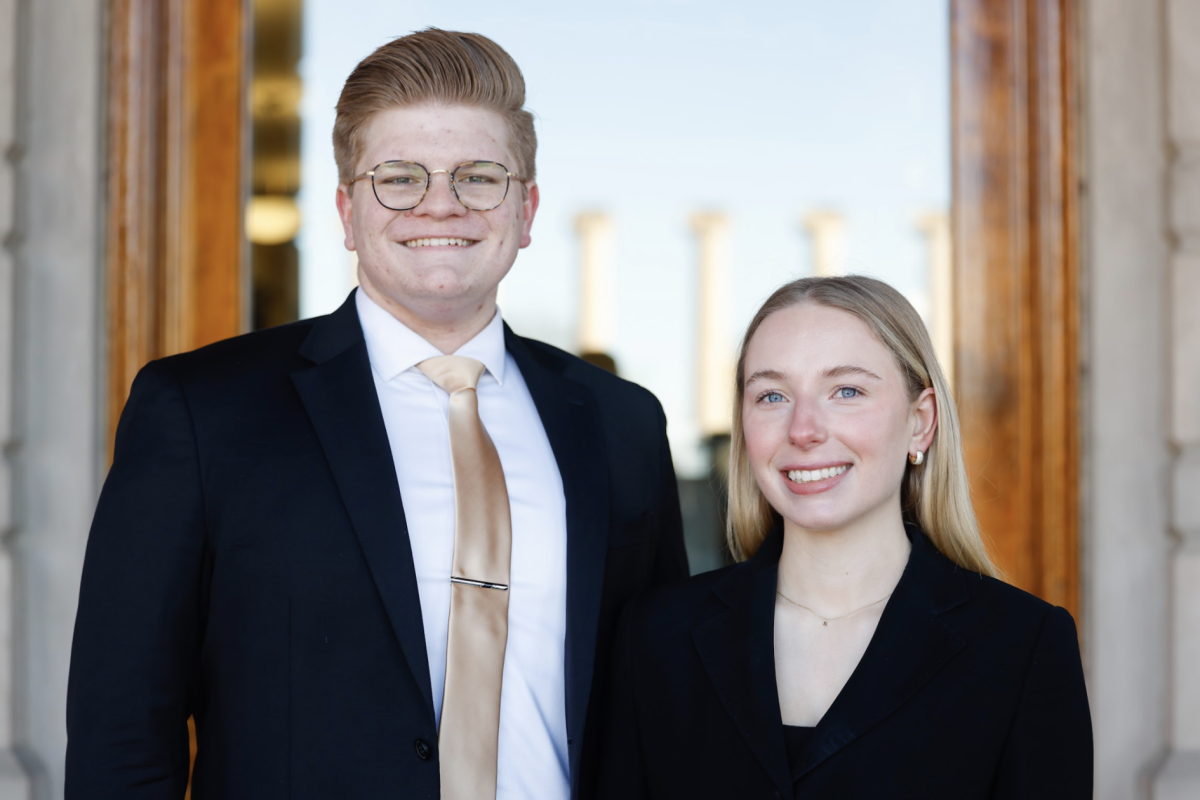The Missouri Students Association hosted its annual Campus Safety Walk on Tuesday to identify areas of campus deemed unsafe. Students from various organizations, including the Relationship and Sexual Violence Prevention Center and the Residence Halls Association, participated in the walk, which took place after dark while street lamps were on.
The event began at Memorial Union. Participants were then split into five groups with each assigned to a different area of the university. One member of MUPD walked with four of the five groups. Each was given a map of its assigned area and two blank sheets of paper to record any findings.
Justin McDonald, director of the Department of Student Services, a branch of MSA, was in charge of planning and carrying out the event.
“That’s a huge area,” Environmental Health and Safety technician Josh Nunn said to McDonald when he saw his group’s map.
“We have a huge campus,” McDonald said to Nunn.
Before the teams went their separate ways, McDonald notified the room what to look out for. He said to look for dimly lit walkways and reminded everyone that they should be able to see up to 50 feet in front of them. He also said to look out for tripping hazards and any bushes or trees that have overgrown and covered lights or signs.
MUPD Officer James Young walked with McDonald, Nunn, senior Gabby Vest and sophomore Rebecca Wilkes. Young attended the walk last year and brought a light meter to measure the amount of visible light in a given area on campus.
The light meter measured the illumination in “foot candles” and Young said most walkways should be 1-2 foot candles. Young tested a sidewalk by Ninth Street, where a tree blocked most of the light. It came up as .2 foot candles and McDonald wrote it down.
McDonald said having MUPD officers is crucial to the walk as they provide more information about the campus that students may not know. They’re aware of what it means for a light to be “up to code,” he said.
As the group walked their designated areas, surrounding and within the Francis Quadrangle, they marked burnt street lights and broken lamps outside MU buildings. On the stretch of Ninth Street, in between University Avenue and Elm Street, McDonald noted two street lamps were not illuminated.
Young said there are generally two ways to go about lighting a college campus: lighting the entire campus at all times or simply lighting the pathways that students are encouraged by the university to follow. Young said MU tends to light only the pathways that should be used. Lighting the entire campus leads to heavy light pollution, Young said, but that can be reduced by installing cutouts on the street lamps to direct the light downward.
In addition, McDonald also wrote down whenever a member of the group said they didn’t feel safe. Vest said she didn’t feel safe in the walkway leading up to the Neff Hall Arch between Neff Hall and Walter Williams Hall.
“I don’t like how dark it is,” she said. “Whenever I’m walking alone at night, I don’t walk through there.”
McDonald said it’s important to note those places since he believes every college student should feel safe.
“I think it’s important to address that if a student doesn’t feel safe, it could be an issue even if everything is up to code,” he said.
Campus safety affects not just students, McDonald said. From prospective students on a tour to faculty at MU, he thinks everyone should feel safe on campus.
“I think safety is just part of the overall college experience,” he said. “You want to have a safe campus so you’re allowed to have that.”
He also said he was pleased that students not active in MSA or other programs on campus specifically aimed at safety participated in the walk.
“You don’t have to be in a leadership position to care,” McDonald said.
Vest attended as a member of the Mizzou Unity Coalition, a student-run group that aims to integrate the disabled population with the community of Columbia.
Vest decided to participate after McDonald reached out to her through her group. The Unity Coalition puts on its own walk in the spring, called the Accessibility Walk, aimed to target and note any problems regarding accessibility, specifically. Vest said MSA representatives have walked and participated in that in the past and she wanted to return the favor.
“I like working with them; they make things happen,” she said.
She said she also wanted to provide expertise with accessibility problems at MU.
“A lot of campus safety has to do with accessibility, which is what I specialize in and know a lot about,” Vest said.
After McDonald and his team finished, they headed back to their original meeting place, Memorial Union, to turn in their notes and marked-up maps.
“We found a couple lights out, some areas of concern; always good to do that once a year at least,” McDonald said.
McDonald and others at MSA will later gather the notes to write up a complete report and reach out to various offices around MU who would be in charge of reported areas. The report should be finished within the next two weeks, McDonald said.
_Edited by Olivia Garrett | [email protected]_














